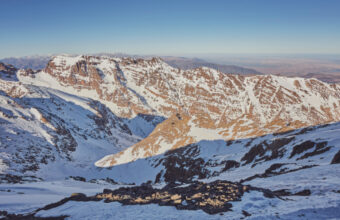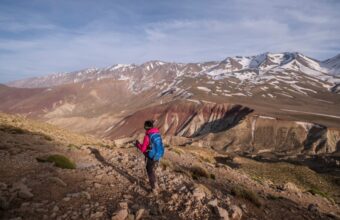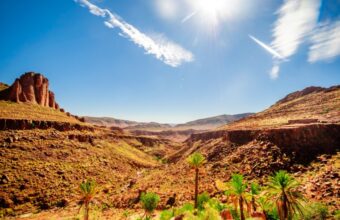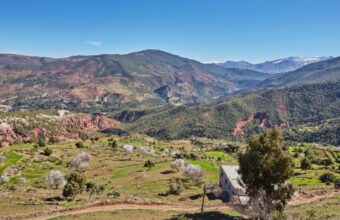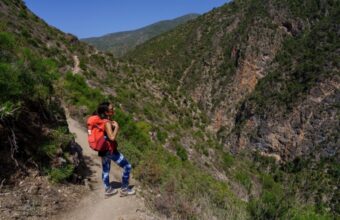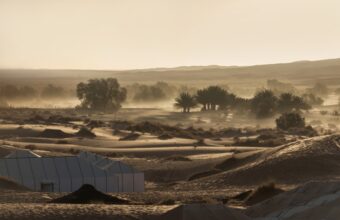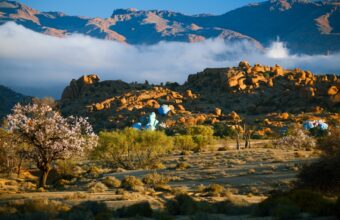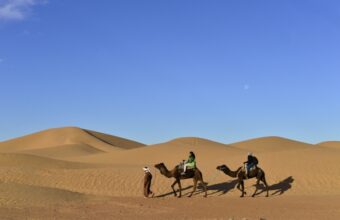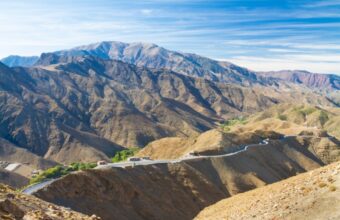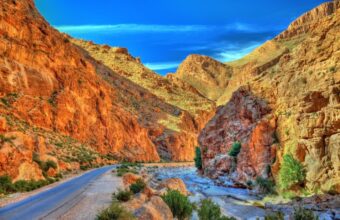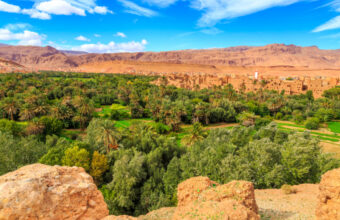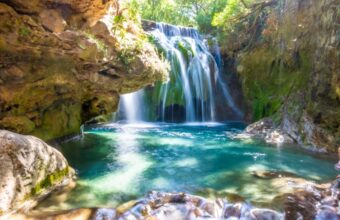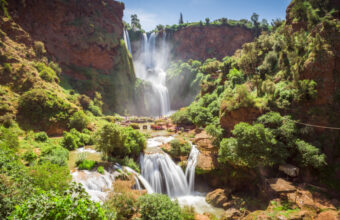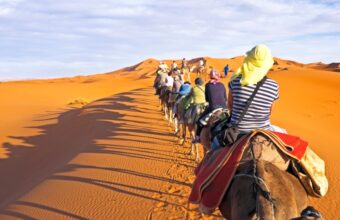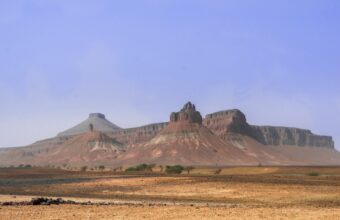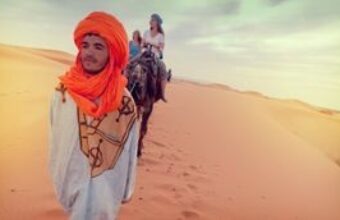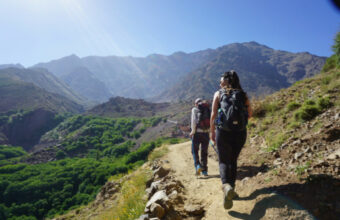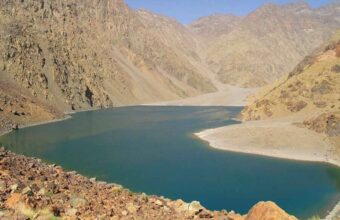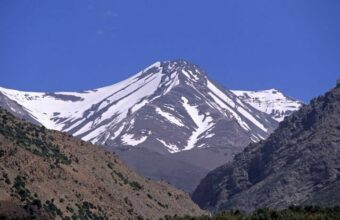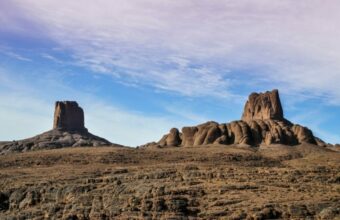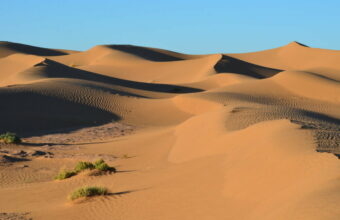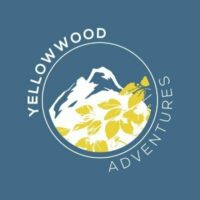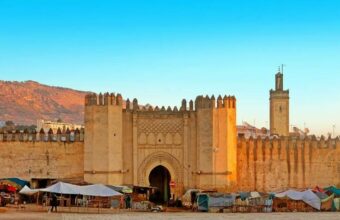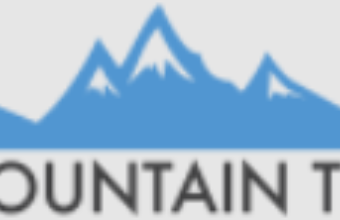Trekking in Morocco
An expert guide to the best treks & hikes in Morocco
I've spent many months trekking in Morocco as a travel journalist and guidebook author. With close-contact cultural interaction in the rural villages that dot this deeply hospitable land, Morocco is one of my absolute favourite trekking destinations.
Jebel (Mount) Toubkal – by far the most popular (and most heavily marketed) place to go hiking in Morocco – is indeed spectacular and certainly deserves its fame. But some of my absolute favourite treks see far fewer visitors, with scenery that is just as impressive.
Here are a handful of my favourite Morocco trekking highlights.
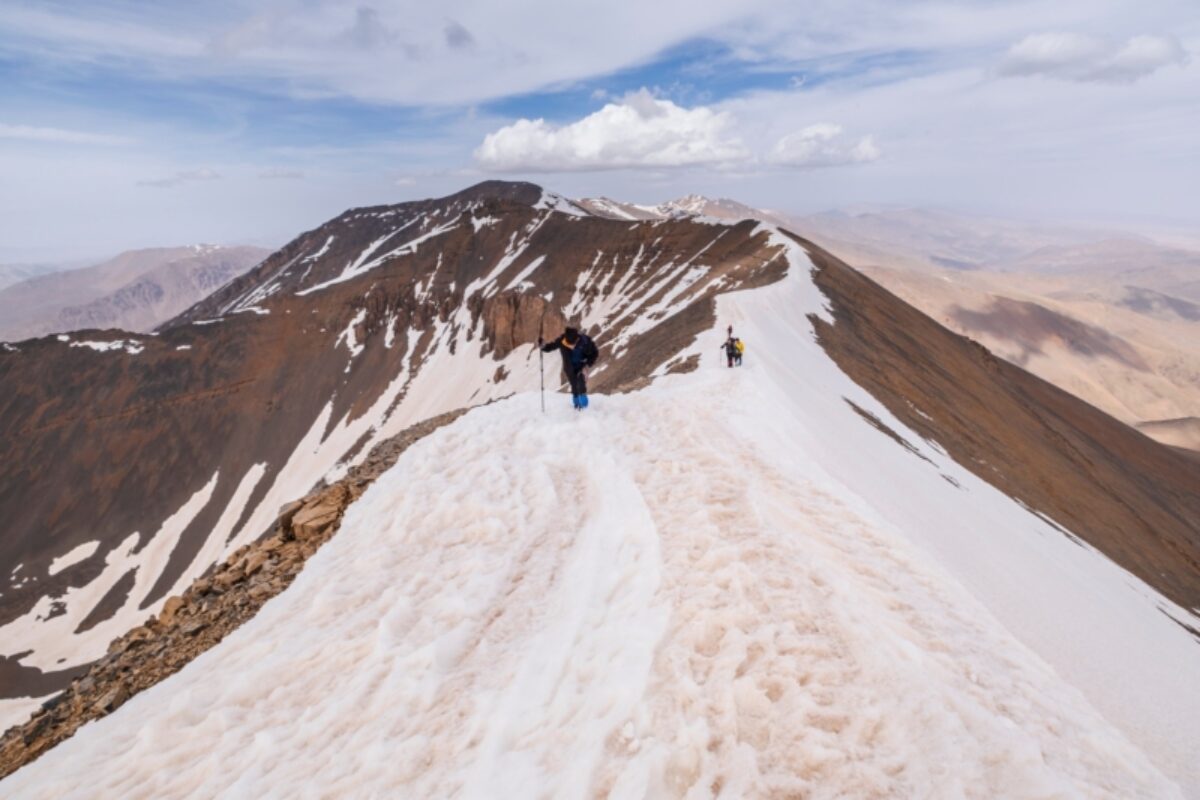
Jebel (Mount) M'goun draws a tiny fraction of the numbers of more famous Jebel Toubkal
The best treks in Morocco
Some of the most popular, and lesser-known, hikes
-
Toubkal National Park
View trips -
Atlas Mountains
View trips -
Atlas Mountains
View trips -
Atlas Mountains
View trips -
Talassemtane National Park
-
Atlas Mountains
View trips -
Erg Zahar
View trips -
Tafraoute
-
Erg Chigaga
View trips -
Atlas Mountains
View trips -
Todra Gorge
View trips -
Dadès Valley
View trips -
Talassemtane National Park
-
Tanaghmeilt
-
Erg Chebbi
View trips -
Iriqui National Park
Trekking in Morocco: Where to go
Morocco's best – and some lesser-known – hiking locations

Ait Bougmez Valley
Aït Bougmez Valley & M'goun Massif
Best trek: M'goun Circuit trek (five days)
Few hikers make it to Aït Bougmez, a valley running along the M'goun Massif in Morocco's Central High Atlas mountains. Those who do are rewarded with lush pastures, picturesque views across the valley and hospitable locals who don’t let language barriers get in the way—and some of the best trekking in Morocco.
Every spring, the nomadic Ait Atta tribes make a two-week trek to the Aït Bougmez Valley. Once here, they graze their herds in the valley’s rich pastures and sparkling rivers fed from glacial lakes before returning home for the winter. Avid trekkers can join for the transhumance (livestock migration), an activity that may be best done sooner rather than later given the decline of traditional nomadic life.
The village of Agouti is the starting point for a scenic three- or six-day trek to the M’Goun Massif, the second highest peak in Morocco (after Jebel Toubkal in the nearby Toubkal National Park).
Hire a mountain guide to accompany you and plan to stay in gites along the way. This trek is best done from spring to fall, before the harsh winters descend on the valley.
Staying in the valley provides opportunity for day treks to a glacial lake where nomadic tribes graze their herds in the summer months, or multi-day treks traversing the valley. With little signage and few restaurants, it is best to visit with a Morocco trekking operator, or find your own trekking guide locally who will also coordinate muleteers and piping hot cuisine along the way.
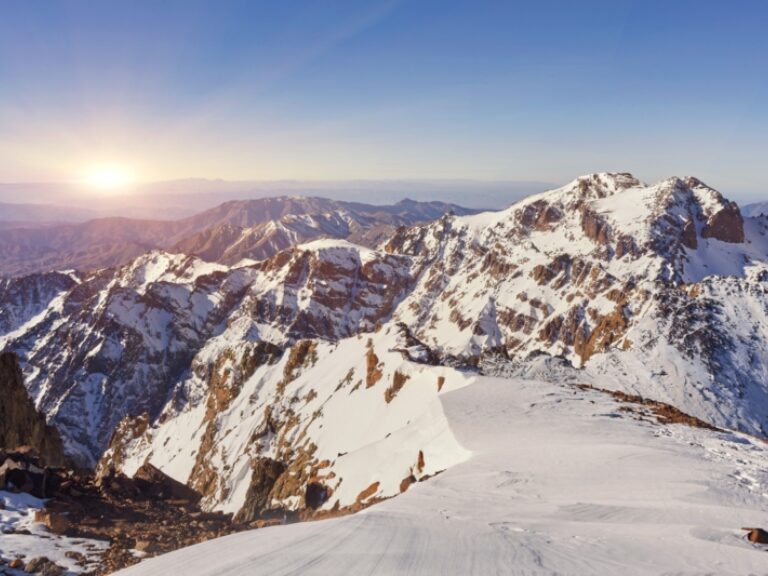
Toubkal National Park
Toubkal National Park
Best trek: Toubkal Circuit (six days)
No round-up of Morocco trekking highlights can ignore Toubkal National Park in the High Atlas Range, the highest and most extensive stretch of the Atlas Mountains.
Home to Jebel (Mount) Toubkal, North Africa’s highest peak, this is by far Morocco's most popular hiking destination. It's a region of sparse, rocky and snow-capped (in winter) peaks and lush green valleys below with blossoming fruit trees in the spring, which make for some excellent trekking and hiking, although one that draws significant crowds.
While the tourism industry likes to push the two-day Mt Toubkal trek, I'd highly recommend making time for the six-day Toubkal Circuit trek.
The trailhead is just beyond the village of Imlil, where most visitors disembark to start their hike. Hiring a guide to accompany non-locals on the journey is a must, in fact, it’s mandatory. I’d suggest hiring an official guide to avoid any faux guides who may be hanging around en route. Licensed guides are typically local and undergo training to earn their certification to help trekkers navigate the way, the weather and organise supplies for the journey.
For a shorter hike, depart Imlil to wander through lush green valleys, climbing up to one of the mountainside Amazigh villages or an approximately six-hour trek to Sidi Chamharouch, a pre-Islamic pilgrimage site known for healing health issues or exorcising spirits.
From Marrakech, a day trip to Ouzoud Waterfalls makes for a refreshing day out. The trail is easily marked, meaning just organise transport and you can easily follow the path to the canyon where two-tiered waterfalls cascade. Be mindful of the Barbary apes you may encounter while passing through the shaded areas.
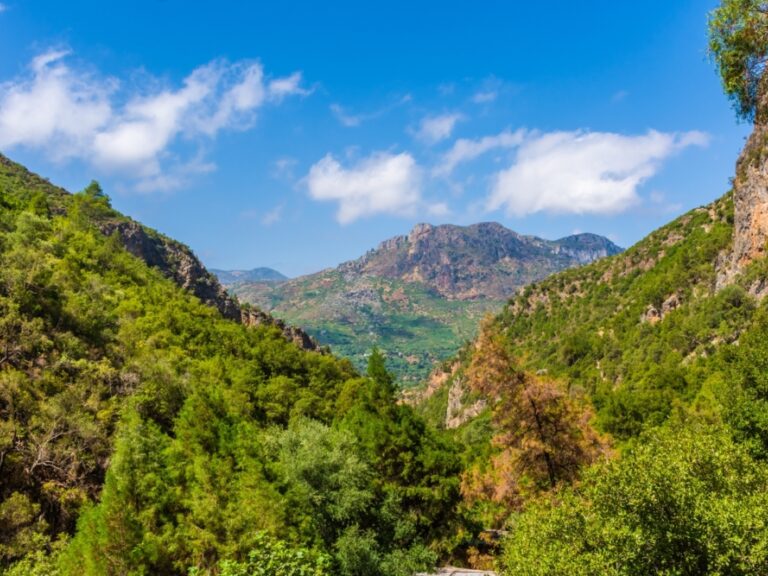
Rif Mountains
Talassemtane and the Rif Mountains
Best trek: Talassemtane National Park Circuit (four days)
Nestled in the heart of the Rif Mountains, the blue city of Chefchaouen and nearby Talassemtane National Park offer trekkers a welcome escape to the Toubkal bustle.
Once inside Talassemtane National Park, quiet paths wind through cedar forests, across high ridges and past tiny Berber villages. The main attraction here when hiking alongside, and sometimes through, the river was the awe-inspiring Bridge of God, a 30-metre high natural bridge connecting the canyon, where we swam in the waters below.
This is a popular spot in the summer months, particularly with vacationing locals. Nevertheless, when travelling in this region, I still hired a local guide who also organised transport.
For longer treks, a guide is highly recommended, not only to lead the way, but for organising donkeys to transport supplies, assisting with any unexpected medical emergencies, and they can often provide gear for the journey. The region is known for its (illegal) marijuana cultivation, and a guide will help you stay well aware of the areas that are best avoided.
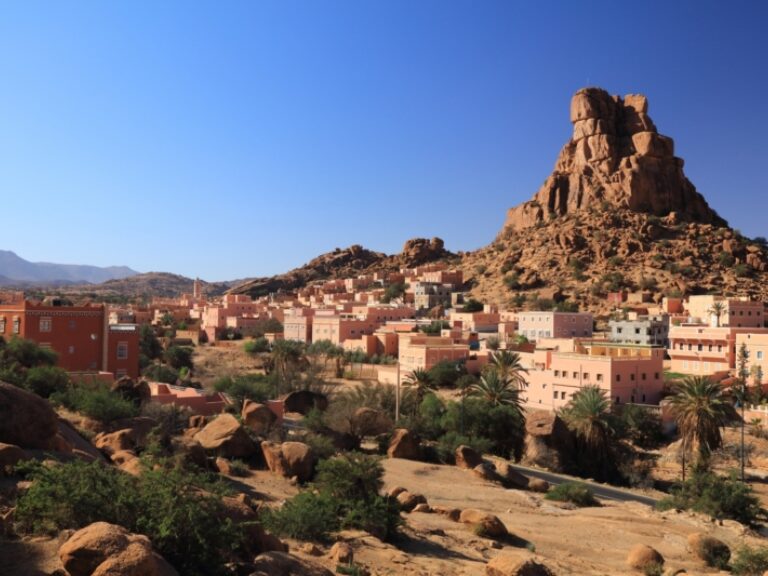
Atlas Mountains
Anti-Atlas Range
Stretching from the Atlantic Ocean inland toward the Sahara Desert is the Anti-Atlas Range, another of Morocco's lesser-visited trekking locations.
Although technically part of the same geological system, the Anti-Atlas couldn't be any more different to the High Atlas. The peaks are much lower and the scenery is a semi-arid landscape of jagged mountains and rugged gorges.
Vastly fewer trekkers come here compared to the High Atlas, making this a refreshing change to the touristy bustle further north.
The Anti-Atlas Mountain town of Tafraoute, gateway to the stunning AmeIn Valley, is worth a visit for a night or two allowing for at least a day hike, or just a break for travellers heading to/from the Sahara Desert. Famous for its almonds, colourful babouche slippers particular to the region, and even as a starting point for cycling up to the blue rocks and spotting prehistoric rock carvings.
There are rewarding hikes around the AmeIn Valley, with most travellers starting in the village of Oumesnat and following paths that lead through neighbouring villages and pass argan and almond trees dotting the landscape. In the valley’s village of Asgaour, the rockface resembling a lion’s head is one to find amongst the craggy rocks.
The trails can be navigated without a guide, but be mindful of limited shade and strong sun. My advice is to visit with a trekking operator: it will be rare to find anyone speaking English and replenishing water and food supplies may be tricky. Pack sunscreen and snacks accordingly.
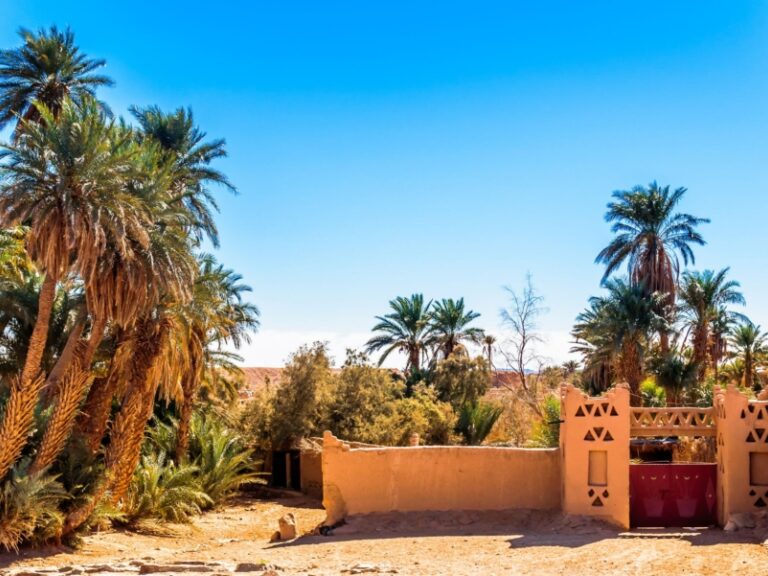
Sahara Desert
For more accessible trekking
The village of Merzouga has accommodation to suit all budgets, and you can arrange everything from a sunset camel safari to sandboarding, quad biking, overnight camping and longer treks.
Erg Chebbi is Morocco’s most accessible stretch of Sahara, with dunes around 22 kilometres long and 25 kilometres wide, reaching lofty heights of 160m in places. It is especially striking at sunset, turning from orange to pink and purple as the night sky glitters with stars. Then you might tuck into madfouna, or ‘Berber pizza’, a stuffed flatbread baked in a fire pit buried in the sand, before a campfire drumming session.
Campsites can be just 15 minutes from Merzouga by 4x4 or a couple of hours by camel. The downsides: convoys of vehicles dropping off people and supplies in high season, quad bikes overtaking camel caravans and being across a dune from another camp. If you want more solitude, choose your camp carefully or go out of season.
For a real hidden gem, the village of Khamlia, six kilometres south of Merzouga, is home to Dar Gnaoua, where musicians – including the renowned Les Pigeons du Sable – celebrate their sub-Saharan African roots, performing to an enthusiastic crowd, shaking krakebs (metal castanets) and keeping their hypnotic beat on tbel drums.
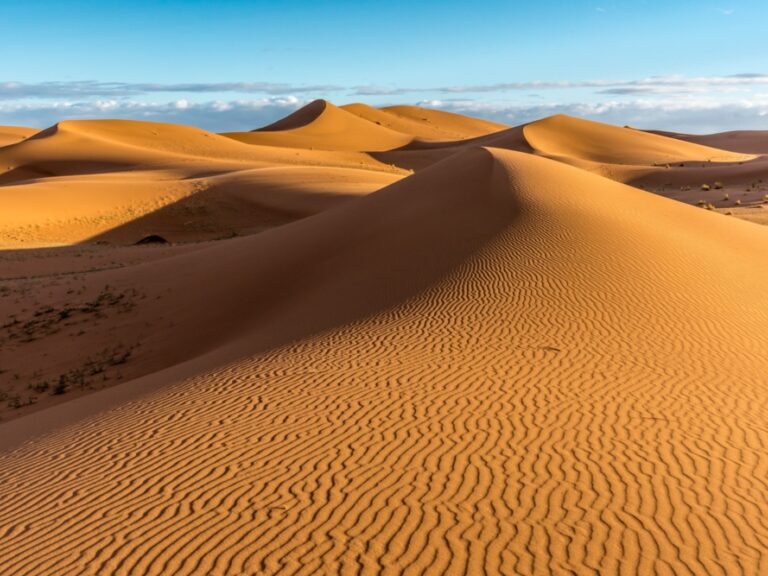
Sahara Desert
Best for a real adventure
M’hamid is the last Moroccan outpost before the Algerian border, where the road dissolves into sand and the desert takes over. It’s the jumping-off point for the dramatic dunes of Erg Chigaga, 60 kilometres to the west – around two hours by 4x4, or a thrilling three day trek by camel.
Erg Chigaga, Morocco’s longest and highest sand sea, ripples for around 40 kilometres with dunes topping 300m. It’s wilder and less visited than Erg Chebbi, and its camps are more isolated, but the off-road journey to get there is more expensive. On the way, there are stops at panoramic viewpoints and perhaps a mint tea break with desert nomads outside their goat-hair tent.
From your campsite, you can trek on foot or by camel, scramble up and sandboard down a towering dune, and savour the sunset and stellar desert views before stargazing from a carpet spread across the sand and music around the campfire. Look out for nocturnal wildlife: the fennec, with its enormous ears, is the smallest fox species, and sand cats are the only desert-dwelling felines. On a morning trek, your guide will point out its tiny tracks zigzagging across the dunes.
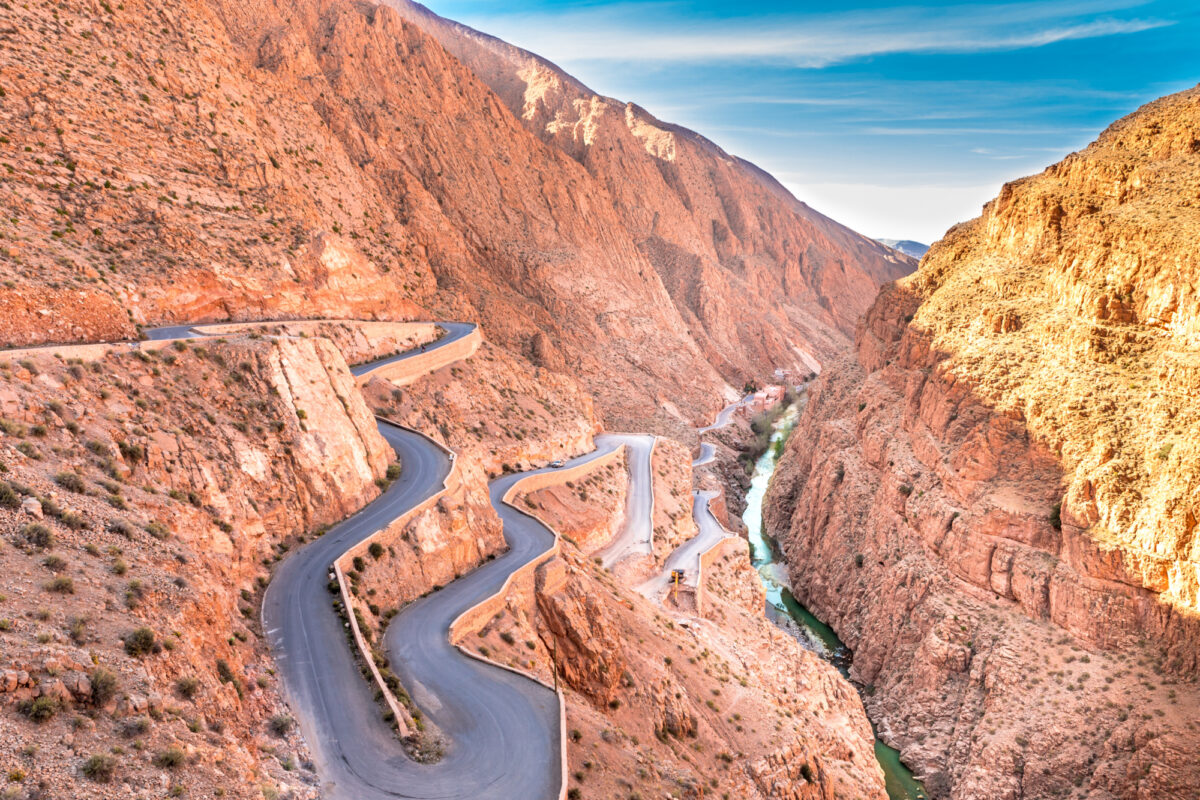
The Dades Gorge in the High Atlas Mountains is said to be one of the most scenic drives in the world
Trekking in Morocco: Need to know
Everything you wish you’d known before booking
My biggest Morocco trekking tip
If you’re trekking in Morocco for the first time, chances are you’ll be coming to hike Jebel (Mount) Toubkal. Toubkal, Morocco's best-known (and most heavily marketed) trekking area is indeed spectacular and is certainly worthy of the attention.
But the way it’s commonly sold by the mainstream Morocco trekking industry leaves a lot to be desired.
The basic Jebel (Mount) Toubkal trek is typically offered as a two day itinerary from Imlil (or three days if departing from & returning to Marrakech). You’ll do one day of heavy hiking to reach Toubkal Base Camp. On the second morning you’ll make a pre-dawn push to catch sunrise from the summit, then turn around and descend 2,500 metres all the way back down. It’s gruelling, busy and, in my experience, will leave you feeling rushed and anti-climatic.
A far more relaxed trek is the Toubkal Circuit, which is typically done in six days with the final ascent saved for last. If you’ve got the time, I’d strongly recommend doing it the slow way.
Take it seriously
Often at low elevations and with reasonably short trekking days, Morocco’s treks may sound like a walk in the park, at least on paper. Reasonably fit and acclimatised trekkers should be able to tackle most of the multi-day options, though don’t underestimate Toubkal Summit at nearly 2,400m of elevation gain in just two days.
But long days in parched landscapes under the high Atlas sun demand self- and situational awareness from even experienced walkers; this is not a place where you want to be caught with an empty water bottle several miles from the next water source, especially alongside a guide who thinks nothing of drinking like a camel when there’s water available and then hiking through the midday without a water bottle, and yes I do speak from personal experience here…
Morocco trekking FAQs
Your questions, our expert answers
Question
When is the best time to go trekking in Morocco?
Answer
The High Atlas is most accessible from late spring into early autumn, though notably hikers do climb Toubkal year-round.
Overall, I recommend trekking in either spring (April to June) and autumn (September to November). In spring, the weather is generally mild, and the mountains are beautifully adorned with blooming wildflowers. The snow from winter has usually melted at lower altitudes, making the trails more accessible. In autumn, the weather is similarly mild and stable, making for comfortable trekking conditions. The autumn colours can also make the landscapes particularly scenic.
The summer months (July and August) can be very hot, especially in the lower valleys, but it's still a good time for high-altitude treks like Mount Toubkal, where temperatures are cooler.
Winter (December to February) brings snow and cold weather, which can make high-altitude treks more challenging due to the need for winter gear and experience in snowy conditions. However, for experienced winter trekkers, this can provide a different kind of adventure.
As you’d expect, the Sahara is brutal in summer, and while a sunrise or sunset camel rise can be fun you won’t want to be out in the dunes all day long unless you’re in the shoulder or colder months.
Morocco’s lower mountains, the Mid-Atlas and the Rif, are accessible year-round however the weather in winter can swing wildly from sunshine and shorts to winter snows within just a few days.
Question
Which is your favourite Morocco trekking region, and why?
Answer
I quite like the M’Goun area: big rugged mountains that compete with anything in the High Atlas for beauty, plus seemingly endless hamlets and villages where it’s possible to stop if only for a moment and sink into the rural lifestyles that feel almost timeless. Atop the bigger villages, old crumbling kasbahs still tower above for a bit of added cultural flavour and photogenicity.
Question
I’m not keen on overly touristy places, is the Toubkal trek right for me?
Answer
Toubkal Park brings in around forty thousand visitors per year, and while not all of those make the summit it certainly can feel crowded at the huts in high season. It’s a fun, non-technical, time-efficient climb and of course there’s a certain satisfaction in reaching the highest peak in North Africa.
For a less crowded experience, the week-long Toubkal Circuit swings east from Imlil and circles around to the peak from the south side, only linking up to the main route at Toubkal pass a couple hundred metres below the summit. Or, just visit in winter, when there’s far fewer crowds (but far more technical skills required!)
Question
Can you trek in Morocco solo or without a guide?
Answer
Most of these treks are doable for those with basic navigational and mountain skills. Guides became mandatory in the Toubkal region from 2018 after a grisly incident involving the death of two Western tourists, but post-COVID this requirement appears to have been informally loosened.
Do consider however that beyond the Toubkal trek very little of any foreign language is spoken in rural Morocco – often including at local guesthouses and refuges – so having a guide for cultural and linguistic interpretation will add to the experience beyond just basic navigational and safety considerations.
Question
What are the hardest and easiest treks in Morocco?
Answer
Daytreks out of Zahouait Ahansal are sublime, and while often steep, are typically not very long and not technically demanding. For difficulty the route through the Tichka Plateau to the peak of Toubkal is up towards the top: not only for physically strenuous days, but because in the remote Tichka you’ll need to pack in absolutely everything.
Question
What sort of accommodations are there?
Answer
Along popular trekking routes through populated areas, family-run guesthouses and basic gîtes d'étape are often available, ranging from comfortable and homelike to barebones simple, while in the busiest areas mountaineering refuges are common.
There may or not be a way to reserve in advance, but independent trekkers will more often show up and knock on the door. In the desert, touristy camps are popular both for accommodation and as places to arrange camels and guides for treks. Where none of these exist, your only option will be independent tent camping.
Question
What kind of food should I expect on a Morocco trek?
Answer
If staying in guesthouses or refuges, expect all the delights of Moroccan cuisine: tagines and couscous, fresh seasonal salads and fruits, and lots of soups. Toubkal area and some of the Sahara camps offer Western dishes as well. If self-catering while camping, try to stock up on supplies in market towns, as smaller villages often carry only the absolute staples and whatever fresh vegetables are currently coming out of the garden.
Question
Is hiking in Morroco safe? How about for solo female travellers?
Answer
In general Morocco is considered safe for visitors, though you don't have to research very far to come across the brutal murder of two Scandinavian tourists by self-identified Islamic State supporters in December of 2018. Forbes ranked the county #8 least-safe for women shortly after, primarily on the basis of gender inequality and street safety. The latter especially seems to be a common source of problems for female travellers: catcalls, street harassment, and unwelcome attention.
Question
Are permits needed to trek in Morocco?
Answer
No permits are required for major trekking areas in Morocco, though guides are still (officially, at least) required for the Toubkal region.

